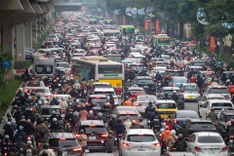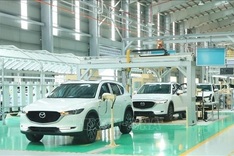The ADB now expects developing Asia and the Pacific to grow by 4.7 per cent in 2025, down 0.2 percentage points from its April forecast. The projection for 2026 has also been trimmed to 4.6 per cent, according to the Asian Development Outlook released in July 2025.
The revised outlook reflects growing risks, including potential escalation of United States tariffs, rising geopolitical tensions, and a possible deeper downturn in China's property market. These factors could disrupt global supply chains and drive up energy prices.
“Asia and the Pacific has weathered an increasingly challenging external environment this year. But the economic outlook has weakened amid intensifying risks and global uncertainty,” said ADB Chief Economist Albert Park. “Economies in the region should continue strengthening their fundamentals and promoting open trade and regional integration to support investment, employment, and growth.”
The ADB maintained its growth forecast for China at 4.7 per cent in 2025 and 4.3 per cent in 2026, with policy stimulus expected to support consumption and industrial activity despite continued weakness in real estate and exports. India’s outlook was revised slightly downward to 6.5 per cent in 2025 and 6.7 per cent in 2026, due to concerns over trade and higher US tariffs.
Southeast Asia faces sharper impacts from deteriorating trade conditions. The ADB expects the subregion to grow by 4.2 per cent in 2025 and 4.3 per cent in 2026, each down about half a percentage point from previous estimates.
Vietnam’s economy is projected to remain resilient, although near-term growth may soften under pressure from new US tariffs. In the first half of 2025, the country posted strong export and import performance and saw a surge in foreign investment disbursement. Foreign direct investment pledges rose by 32.6 per cent, while actual disbursements grew by 8.1 per cent year-on-year. Public investment disbursement hit its highest level since 2018, reaching 31.7 per cent of the annual plan, up 19.8 per cent over the same period in 2024.
Vietnam’s trade performance was buoyed by front-loaded exports ahead of the July 2025 US trade deal, which imposed staggered tariff hikes. However, this export momentum is unlikely to continue in the second half of the year. A slowing manufacturing sector, as indicated by the Purchasing Managers’ Index since late 2024, points to further headwinds.
Despite these challenges, domestic reforms, if swiftly and effectively implemented, could help buffer external shocks. Vietnam’s GDP growth has been revised to 6.3 per cent for 2025 and 6.0 per cent for 2026. Inflation is expected to ease to 3.9 per cent in 2025 and 3.8 per cent in 2026.
One bright spot in the region is the Caucasus and Central Asia, where growth forecasts have been raised by 0.1 percentage points to 5.5 per cent in 2025 and 5.1 per cent in 2026, thanks to an anticipated increase in oil production.
Regional inflation is expected to moderate, aided by lower oil prices and strong agricultural output. The ADB projects inflation at 2.0 per cent in 2025 and 2.1 per cent in 2026, down from April forecasts of 2.3 and 2.2 per cent, respectively.




















